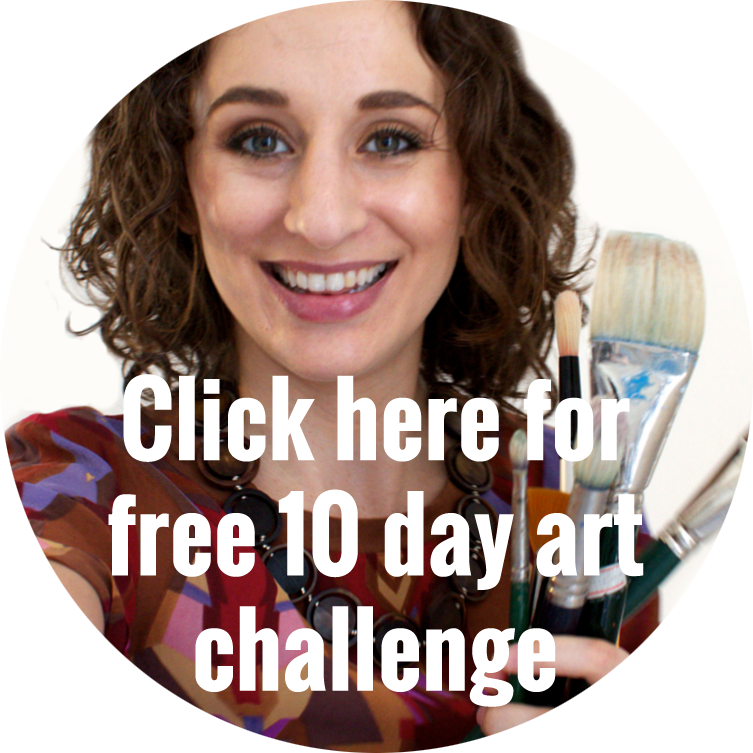Charmaine Boggs is an artist and arts educator living near Dayton, Ohio. This is her second installment in a 4-part series as one of Artist Strong’s Artists in Residence. You can follow her artistic adventures, and occasional side trips, on Instagram @cboggsart.
Here we are…week 2 of my Artist Residency with Artist Strong. Last week, I shared the story behind the project that I’m sharing in this series. I’ve been converting old family photographs into cyanotype prints that will be used to create a series of mixed media collage pieces. This week, I want to share a little bit about the cyanotype process that I’m using for this project and a few prints that I’ve made so far.
People often talk about “going down the rabbit hole” with regard to social media and I do agree that can be a serious drain on one’s time. However, right now, it can’t begin to compare with the depth of the hole I’ve been in while going through old family photos! So many stories…so little time! And to complicate things, many are faded and unmarked, so I have no idea who some of these people were.
At this time, I have one main objective. I am looking for photos of family members that will work well as cyanotype prints. For this purpose, not just any photograph will work. Crisp, clear black and white photographs with strong contrasts between light and dark areas work best. This can be a challenge, especially wedding photos with the bride all in white. So hard to get the lovely details!
I have had some success with converting sepia toned photographs to black and white and even some color photos, but overall, my best cyanotypes started out as black and white photos. And of those, the best results have been from photographs taken by a professional photographer, which is why so many of the ones I have so far are from weddings, First Communions, and other formal events.
Another resource for printmaking are the negatives from rolls of film used for casual photography. My very first cyanotype photographs were created from an envelope of negatives that I found in the boxes. I just wish there were more. So many are blurred or overexposed, so aren’t useful for the cyanotype process.
Like any new art process, there has been a learning curve for this one. Basic cyanotypes are simple, but working from photographs and their negative images adds a layer of complexity. For example, when I made this negative using the PS Express app, I forgot to invert the black and white image. The resulting cyanotype images are also inverted.
Other variables to consider include the intensity of sunlight on any given day, the exposure time to sunlight, and even the type of paper that is used for the cyanotype print.
Along with the photographs that I’ll be using for this series, I’m collecting other memorabilia. Things like birth certificates, wedding invitations, personal letters and postcards, and even old report cards and diplomas can be incorporated into the collages. I don’t want to damage the originals, so these will be copied and printed for cutting and pasting.
When people see my cyanotypes, they often have questions about what a cyanotype is and how the process is done. Cyanotypes have a history that goes back to 1842, when Sir John Herschel developed the process as a means to reproduce notes and diagrams for scientific purposes. His friend and colleague, botanist Anna Atkins, later used the technique to produce cyanotype images of algae and other plant materials to illustrate her research.
You’ll sometimes hear cyanotypes referred to as “blueprints.” This is not just for their color. The process was also used for architectural renderings prior to the printing processes available today.
I have a series of cyanotype tutorials on my YouTube channel, so if this looks like something you’d like to try, check them out! It’s easy, fun, and very inexpensive to get started. The process of using photographs is a little more involved, but I’ll be working on a tutorial for that in the coming few weeks.
That’s it for this week. By next week, I hope to have at least a partially finished collage to share with you and maybe even that tutorial with the process I’m using for the photos.
Every month, 1-3 artists show up in our Artist Strong community to share their artistic process, journey, explorations with us over the course of a month.
The goal is to normalize the MANY, VARIED experiences of being an artist.
And if YOU want to apply to be an Artist Strong Artist Resident, subscribe to our weekly updates to hear about the next time applications are open.


These are wonderful! I’m really enjoying your YouTube channel!
Thank, Kirsten! ISO glad you’re liking what I pit out there!
Wow! So much for spell check!